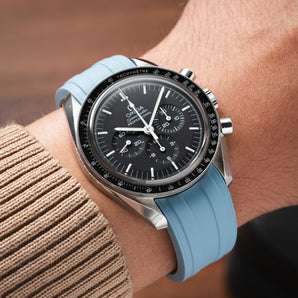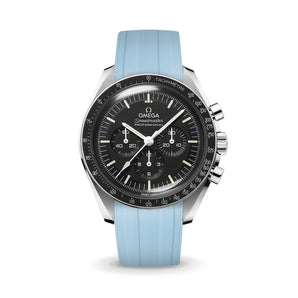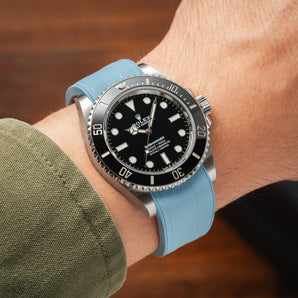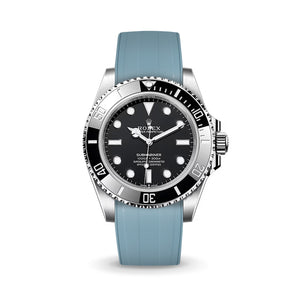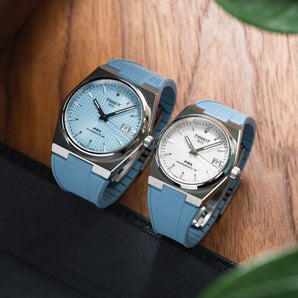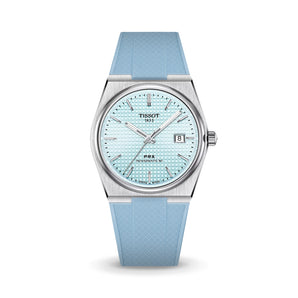For the past decade, French independent watchmaker Sartory Billard has quietly built a reputation among collectors who value emotional connection over technical specifications, creating timepieces that function as wearable art rather than mere instruments. Founded in 2015, Sartory Billard began as a bespoke-only operation, with Armand translating customers' personal stories, memories, and experiences into unique dial creations. From hand-etched tantalum surfaces that emerge from years of material experimentation to silicon wafers sourced from retired Apple engineers, each piece tells a story that extends far beyond its timekeeping function.
As Armand marks his brand's 10th anniversary and his own 50th birthday in 2025, Sartory Billard stands at a fascinating crossroads. With an Asian expansion through Singapore's Sincere Haute Horlogerie (SHH), a growing network of American retailers, and ambitious technical projects like the SB08 jumping-minute tourbillon, the brand is scaling its artisanal approach while maintaining its core identity. Our conversation with Armand in Singapore reveals an artist-watchmaker grappling with growth, defending his craft against commoditisation, and preparing for the next chapter of his creative evolution — one that may finally allow him to fully express the bold design vision he shelved a decade ago.
Singapore Expansion & New Retail Partnerships
Ken: Welcome back to Singapore — you've been here quite a bit now.
Armand: Fifth time in four years. I still feel very new to Singapore. I don't travel around much and still know nothing much about the city, but when you're in the taxi from the airport, it feels familiar. I really like it. You get the connection, the memories — very good memories in Singapore. Each time it piles up. Today with SHH was fantastic. We spent a few hours together.
Ken: Let's start with that. SHH is now a retailer for you in Singapore, Malaysia, Thailand and Taiwan. Is this your first retailer?
Armand: It's my first retailer in Asia, definitely the first brick-and-mortar retailer in Asia. The way they handle the brand — the team training, the interest and curiosity about the brand and all the pieces we've been creating. All the batches of SB06 this year, eight pieces total, produced in 2025, are for SHH — two pieces per country. The reception seems very good for the brand. We have to build everything from a marketing perspective here, but the SHH team is pushing hard, making content and advertising to their VIP and VVIP customers. I also have retailers in America, which is a very strong market. It's new for me because Sartory Billard was a B2C brand — I started with bespoke and did this for 10 years.

10 Years of Sartory Billard & Coming Full Circle
Ken: Congratulations — you should be celebrating!
Armand: I will. In September, I'm celebrating 10 years of the brand. It's also in September that I turn 50, so everything is aligned. I don't attach big importance to milestone years, but looking back, it's funny. I'm thinking back on designs I did 10 years ago and put in drawers. A few months ago, I pulled them back out. There are some good ideas there — dreams and ambitions I had that I couldn't achieve. Now, I can try to achieve them again.
Ken: You have new knowledge, new capabilities, new know-how.
Armand: Yes, and new brand placement. I began the journey as a brand very strong on case design, and that was too strong at the time for a market and a starting brand. I had to cool down on the case design to emphasise the dial. Now, I feel I can express myself totally on the dial — it's accepted and understood in the market amongst dozens of brands doing guilloché and stone dials. I'm having my own voice with emotion, choosing the guilloché made in-house or the stones I put there. It's not a watch with a stone dial — it's a watch with emotion that goes through the stone dial or through the guilloché.
I used to set aside my thoughts on case design to simplify my voice — I think I can return my design strengths to the case again. It's been growing over the last months. I have my notebook in my suitcase — I did some sketches this morning on the aeroplane.
Ken: That's fun. It's almost like you're coming full circle, and now you're in a position where you can do what you couldn't do in the past.
Armand: Yes, first the financial aspect. You know this more than anyone — you started in your bedroom, and look at you — (Delugs) is a very successful business. With watchmaking, I don't have the same ambition in terms of turnover, but there were always hiccups. You make a piece, send a little money, and totally reinvest. The progress is very slow. I'm hiring the first employee of Sartory Billard this year after 10 years, while you have 20, 30 employees, maybe more today. Two journeys that are parallel in the same industry, but with completely different development rates.
The financial implications — maybe today I can envision making a test piece on case design, making something to see if it works, taking these little risks — are very exciting. During travels, I really like how the moment I travel, I’m forced to not work for several hours. I had no sleep last night. This is my second day in Asia. Usually, my biorhythm is messed up with a seven-to eight-hour difference. The first night, I usually sleep very well. The second night, my body adjusts, and at three in the morning, I'm sketching.

Current Collection: SB06 Regional Editions
Ken: Let's bring it back to the launches this time round. You release eight special SB06 flying tourbillons, two for each city, and every one is unique. Each is inspired by different icons within each city. How difficult was it to translate icons — architecture, nature, products — into watch design?
Armand: For most people, that could be very difficult. For me, this is my language. It's like somebody who's been playing piano for 20 years — classical stuff — and he's listening to blues, which he's never played. If you ask him, “Can you play some blues?” The guy will play blues immediately because he can. Or like a chef cooking — working on a certain type of cuisine, if you give them wild game, they'll make something really good to eat. I've been doing the same for 30 years now. I'm breathing and doing design all the time.
Even with my B2C bespoke customers, when they come to me and say, "I want a watch like this," they never come with a drawing. They never say, "I want guilloché like this, red with gradient and stone."
Ken: They talk about an idea.
Armand: Sometimes they can't really express how they want the watch to be. They say, "I want the watch to evoke the fact that I was living there and moved there, and this is my life." Sometimes it's very abstract, like an open talk.
Ken: So they have a conversation, and from there you learn about their personality, history, experiences, and translate that into a watch.
Armand: Not to brag, but I'm putting the finger right where it is every single time. I've been doing this for 30 years.
Ken: Is this stressful for you, or do you enjoy the process?
Armand: I enjoy it very much. When I had my design agency, customers would come and say, "We want to make a new product — a high-tech phone, for example. It has to evoke this, reflect our market position, while our competitors do that..." They were talking, talking, talking. I would embed the technical constraints — electronics, everything that makes the product — and propose a product that would be the start of the journey. It's exactly the same for bespoke pieces. It doesn't have to be "I want a green dial with red seconds (hand), et cetera." It can be like, "I'm Ken, living in Singapore, here’s my culture, passion and family." I propose designs, then we refine them. I'm bringing emotion and artistry into watches.
Material Innovation & The Tantalum Story
Ken: That's a good tagline. You play with colours, textures, stones and different materials. Where do you find them? We have two different takes here — a tantalum dial hand-etched by you, and this ruby dial from Africa. I've not seen this, except I believe with FP Journe. Do you go around and (actively) source materials?

Armand: I'm getting inspiration all the time. I'm highlighting, putting into the Favourites folder of my web browser and Instagram. This morning, my Instagram feed showed me a guy making special paint for cars, for an Audi in particular. Very bizarre, but there was something in the shimmering and shifting of light I really liked. I highlighted this and saved it. Later on, I'll come back and say, "What can I do with this?"
I'm always looking, finding materials, touching them, getting inspiration from all around because I'm like a sponge.
Travelling is super important for me. I'm living in a very remote village in France, population of about 2,000 people, very green, in the middle of the forest. Inspiration there is limited, and I don't have stimuli 24/7. Once I'm getting out, I'm an absolute sponge for everything. I get massive amounts of information and sensation, but won't deal with them straight away. I take a while to digest them, then get back on my drawing paper. "This I saw six months ago. Why didn't I think of this before?" I actually needed the time.
Ken: You have a data bank of what you've seen, and when you need to pull it out.
Armand: Making the tantalum dial — if I just say I made it, you're going to say, "Okay, fine." But if I explain why I made it, there's a story. When I started the SB04 five years ago, I worked with titanium because I fell in love with De Bethune. I worked crazy hard to learn how to polish titanium and anodise it.

Ken: I remember your titanium mirror-polished dial. That's how I got into the brand.
Armand: That put me on the map. During the process of learning polished titanium, I was blocked by some heating or chemical process to obtain certain colours. I was digging for information everywhere and got to talk with this retired jeweller in Scotland. He was doing jewellery out of titanium in the '70s or '80s. The guy is fairly old, but he said, "I wrote a book back in the late '70s, but it's not published anymore. Maybe you can find one."
I found one in a secondhand shop in the UK, bought it, and read what I needed. Within this book, it also talks about jewellery made of tantalum. I thought, "Tantalum — you can anodise it like titanium." That stuck in my head. A few months ago, before the SB06, I found a piece of tantalum from one of the SB05 cases — a broken part we'd been polishing. I found this piece while cleaning the safe drawers. At that moment, I remembered the Scottish guy saying, "You can etch tantalum."
So I took the piece of tantalum that was pristine and said to it, "You're going to die. I'm going to beat the crap out of you and see what happens."

Ken: So you took the titanium technique, applied it to tantalum, and it worked.
Armand: I have tantalum that changes colour. I make this connection in my brain — very slowly, over months — titanium, tantalum, etching, the same possibilities. I have the polished piece of tantalum that is blued, and instead of polishing it off, I'm taking a brushing tool, scraping the tantalum. When I'm scraping, there's this moving of metal that's very bizarre. It gives me an effect. "Wow, this effect is really cool." It's not like brass, not like scratching titanium, which is very hard. It's like moving paste. I'm getting grinding tools and cutting tools, starting to really batter this piece of lug and case. I found out this is really cool.

I have my mental link between the super-light titanium polished at the extreme spectrum, but with the link of anodisation between them, the extremely heavy tantalum. And I say to myself, "This is pure logic. I started SB04 with a polished titanium dial. Now, I'm going to start SB04-E with a grained tantalum dial." I have a story, a link. Everything is connected. When I'm making a grained and heavily battered tantalum dial, it has a texture you don't find anywhere else. It makes logical sense for me and for collectors because I get to explain why I'm doing it.
Silicon Wafers & Other Unique Materials
Ken: How often do you come across a material that hasn't been made into a dial before?
Armand: Not so often. Maybe once or twice a year, I find something very suitable for a dial that is interesting, that's meaningful to make a dial with. It will be either a dial, or technique or a way to work on the dial. Recently, three years ago, I did one using a silicon wafer.
Ken: I wanted to ask about that. I've not seen that one.
Armand: Nobody used a pure chipset from silicon wafers. It came by request of customers — two actually. One wanted a watch made of a silicon wafer, so I sourced and used it for his dial. The second is a retired Apple engineer who worked on Apple II chipset computers in the early ‘80s. He had the silicon wafers at home. He sent them and called me, saying, "I have this. We could make a dial out of this. That would be cool and meaningful for me because I was developing these 8-bit silicon wafers in the '80s."
So he sent me two pieces. I told him the risk of breaking some is high because I have never worked with this. I was able to save two dials — the others broke or had problems. Now, I’ve worked on this for several clients. I made one for SHH, so the Taiwan edition has a silicon wafer that's spectacular inside, and it's from Taiwan.

Ken: I hope someone who works at the company will buy it.
Armand: I want the CEO of a silicon wafer company to say, "I'm making this, so I'm wearing that." That would be meaningful, super meaningful. Now, I found suppliers of silicon wafers before they're etched and lasered. Every year for four years now, I've been making a Ghost Edition of each model. The first one was mirrored titanium, then I made another using mirrored steel. Then I made one with a fully polished case and bracelet.
 This year, I'm making a watch which will be announced in September. Many people have seen the watch during the last fair — the SB04-E — with an inner-dial made of silicon. The first one I made, I made the full dial using silicon — the entire surface, 32 millimetres in diameter. It's very dark, as silicon is much darker than steel or titanium, almost anthracite-grey, but really shiny.
This year, I'm making a watch which will be announced in September. Many people have seen the watch during the last fair — the SB04-E — with an inner-dial made of silicon. The first one I made, I made the full dial using silicon — the entire surface, 32 millimetres in diameter. It's very dark, as silicon is much darker than steel or titanium, almost anthracite-grey, but really shiny.
One day, I'm playing with the silicon dial, and I have the chapter ring from the tantalum watch. "Oh, this looks the same," then I put the two together and say, "This is exactly what I need."
While the tantalum has the same tone as the silicon, they couldn't be further away on the spectrum, in industry. Tantalum is used in heavy industry because of its density. Silicon is about speed — this is for computers, so it needs to be light and fast. By pure luck, the tone of grey is exactly the same, with one half that's brushed tantalum and the other that's silicon. The balance is super clean. This will be the Ghost Edition for 2025.
Ken: So, silicon was one material. You also worked with Japanese maki-e lacquer for the SB07.
Armand: Yes. That was a limited edition run — two releases. 10 pieces coming later in September. Very cool design; very different from what I did last year, but with the same energy and the same artist from Japan.

Design Philosophy & Artistic Vision
Ken: At this level of collecting, if you're into independent watches and niche brands, you almost buy a watch for the story. Even if you buy based on the look, having a strong story really adds value.
Armand: You're buying the watch for two reasons. First is how it looks. I'm a designer. If it doesn't look nice, I will never consider the watch. It can be a moon phase that only needs adjustment every 10 years, or a split seconds chronograph that tracks a millionth of a second — I couldn't care less if the watch is not nice. Sometimes I give this hard example — I've met watchmakers saying, "I'm making everything by hand, the case is also made by hand." I said, "You shouldn't. Use some sense — why? This is not nice-looking. Your watch is ugly. It's made by hand, but it's fairly ugly because nothing is designed." I'm not saying it in an intentionally provocative or arrogant way, but just to express the ambition to have something nice. It doesn't justify the tools or the route you're taking.
For me, it has to be nice-looking.
The way you're making it nice looking — by hand, by machine, in China, Switzerland, France — whatever. I don't care. Just focus everything: all factors must point to it being nice-looking. That is my first direction. The second is, why are you making this? You have to be able to explain your design to customers, so it has to be meaningful.
Ken: I had a chat with Praneeth, and he said the exact same thing. First thing is, it must look nice, because otherwise it's meaningless. But for those who want to find out more, there's a story to it.
Armand: I really admire the design work of MING. I don't know Ming Thein personally, but I would like to have a discussion with him one day — I can see Ming’s obsession with design from the watches that he’s making. It's mental. Someone like me, we are maybe one out of one million. I really clearly see through his watches his obsession with details and design.
Ken: Going back to the tantalum dial, it's quite interesting. The story you described — it's almost like an unintended journey. You didn't set out to say, "Let's get etched tantalum." It reminds me of the quote by Steve Jobs where he said, "You connect the dots after."
Armand: I'm pretty much like this. I'm connecting dots months after, years after. For the tantalum dial, that was probably three years in my head. But one day you open things up and put the pieces together, and you say, "Oh wow, the pieces are connected." You can't blame yourself for not solving the puzzle sooner; they can be separated by time and space.
Ken: Would you say you're a dial maker? Dial engineer?
Armand: I'm a dial creator. I really want you to look at the watches. They have a certain price point — they can be much more expensive than some entry-level brands that would have other dials. But the way I'm envisioning the package, all the details and effort I'm putting into the design, and the meaning behind the creation of the dial — it's a whole process.
I don't need to appeal to 10,000 people a year; it’s the handful of hundreds that are into what we do and obsessed with design, and repeat customers.
I had a customer this morning. He has owned six SB04-Es since the beginning of the year, and he’s bought older pieces on auction. I was posting online last week about a chrysocolla stone, and this morning, while I was at the airport in Bangkok, he DM-ed me, "This looks like my favourite beach in Puerto Rico," and I received the order a minute after.

Market Competition & Differentiation
Ken: I wanted to ask about the current landscape for watches with different dials. As a consumer, I find that these days you see stone dials everywhere. Dennison has its stone dial, quartz watches that are under $1,000; guilloché patterns, which you still do quite a few of.
I feel like dial designs are coming to the point where they're commoditised. It’s almost like anyone can pick a stone and put it in, and that becomes a dial. How do you stay different? How do you tell customers what you see is not so easy to get?
Armand: I have to explain or talk a little bit more. I have to have better communication. I have to have the support, for example, of retailers that talk to a very specific group of people. I also have to accept that I will not be the brand for all customers.
When you work with Sartory Billard, you embark on a creative journey. You embark on a meaningful journey. You dedicate some time to understanding what's in front of you. If you want a bespoke piece, you dedicate time to talk and say, "This will be a different watch in my collection." It's a different approach. Once again, I don't have to satisfy 1,000 or 10,000 people. This was never my goal. I want to have the opportunity to talk and discover customers.
Yesterday, travelling to Bangkok, my first time in Bangkok in decades, I spent the evening with 15 guys. Some were Sartory Billard customers — I was so happy to meet them — they came in with Sartory Billard watches. They knew me through the media and interviews. We had very long talks about watches, with very passionate characters involved. Each of them had something absolutely unique, completely different within their watchmaking, collecting journey.
I'm always giving this example — one of my favourite customers, Barry from America. He was talking about his collection, which was very eclectic, and I asked, "What's the link between your watches? I don't understand the link between the collections." He said, "I don't collect watches. I collect watchmakers." This is meaningful — when you're collecting watchmakers, you can be 100% sure your watch won't end up in a drawer forgotten somewhere 10 years later.
If you buy a Sartory Billard, you’re talking with me and the retailer to understand all the intention, all the work, all the meaning of the dial. It will be in your collection as a long story, something very meaningful.
Ken: Does this mean you'll be travelling a lot more?
Armand: Yes, which I absolutely love. Travelling more, making it to more fairs during the year. It's probably six rounds of travel over the years. I'm making 10 days now in Southeast Asia — two days in Thailand, two days in Singapore, two days in Malaysia, three days in Taiwan. I love this. Very intense, but from the human point of view, it's super rich.
Ken: Meeting people — it's tiring, but rewarding.
Armand: Super rewarding. A little tiring, but give me some food every six hours, and I'm good. It’s like a very intense road trip. I can do this in Asia. I would definitely do this in America through retailers, hop from east to west, and the Middle East, probably Europe or Africa and South America.

Product Line Evolution & Pricing Strategy
Ken: I want to talk about the line, the collection you have now. We had the SB04, which was discontinued and replaced with the SB04-E earlier this year. Meanwhile, the SB06 is at a very different price point (EUR 110k). Then you have the SB08 in development. How difficult was it to jump from the price point of the SB04-E, which starts at 4,000 euros, to the 100,000 euros price point?
Armand: That was not difficult because the project was commissioned by the Chronotempus watch collecting club. They said, "We want a flying tourbillon." They knew the budget would be significant. I started there, and many people told me, "It's not possible for a brand that sells a 5,000-euro watch to also produce something that’s on the 130,000 end of the spectrum." Why not? The car industry is like this. You can buy a BMW Series 1 for 15,000 or 20,000 euros, and you also have the most expensive from the range, probably a quarter of a million.
If you want a brand so your friend admires how much money you can put on your wrist, there are perfectly fine brands that do that. That's not the case with Sartory Billard. You can put 5,000 euros or 130,000 euros on a watch by Sartory Billard, and get completely different watches. You have more industrial products at the entry level, and fully handmade watches at the end, with dozens of guys working by hand. Regardless, the soul, the intent, the direction and the vectors are all here pointing in the same direction.
Ken: Also, the demographic is very different. You're not trying to sell to everyone. You're not trying to sell hundreds of thousands of pieces. Especially at the price point of the SB06, it's just a handful of people that you’re connecting with.
Armand: Yesterday, I met a customer in Thailand whom the boutique manager introduced to me quickly. It pretty much went, "Okay, you're talking to someone who doesn’t even care about the price tag." So, we talked while I presented the SB06. After five minutes, he pointed at the pietersite one with the storm-effect on the dial. "This is really speaking to me, with the full pietersite dial," I say. "Oh, it's 6,500 euros."
He was captivated by what I said, how I was going to process the choice of the cut, what I'm looking for in the cut, the cloudiness and storminess and how we process the cut in a certain way to create this effect. He was sold on this. It was the emotion. There was no difference between the two ranges.
He paid just as much attention to the 130,000 euro watch as he did to the 6,000 euro watch, because that was the one he liked.
Ken: Do you find that the customer base is the same? The people who buy the SB06 — are they often graduating from the SB04 or SB05 to the SB06, or jumping straight into the brand and going straight for the SB06?
Armand: I think we have a couple of customers who have different watches from the collection. Understand the process, understand me, the watchmaker, following my journey, being on the same path, having the same perception of design, of language, and can afford both. Some just buy the SB06 directly because the retailer has a network of customers that I don't have directly in B2C, but the person will directly understand all the effort, all the will, all the artistry behind the watch. They say, "Okay, it's a fantastic amount of work, and it's something that is not done by other brands."
When they (other brands) talk about technical complexity, "I'm measuring time better than you. I'm doing this better than you." I'm not competing on this. I'm saying I'm going to transport you to a new universe of emotion, of artistry, of art. Purely art. Think of it this way: You're in an art gallery, looking at a painting. This painting speaks to you, then you move on to another artist with more work, less work, or a different technique, but you say, "This doesn't speak to me," and move to another one.
SB08 Development Challenges

Ken: I wanted to ask about the SB08 (with the jumping hour, jumping minute, flying tourbillon, remontoir d'egalite). What is the status on that now? You announced that one and a half years ago.
Armand: Crazy watch. The fact is that today, taking into account the technical complexity and all the drawings, and even in mock-ups, the cost of development will be approximately a million euros, to bring something like that to the prototype stage. We would probably need at least five prototypes to be able to produce a model that is stable enough for the series. Given the amount of money that this would need, I see two ways to get there. One is to be patient and hope that one day I will have the capability of supporting such an investment, aside from all the other projects, and bring it to life. Or, bring a version that will be simplified with my own movement, but with the same essence.
Why did I want to have a jumping hour and a jumping minute? This is not for the sake of having discs. It's because when I create a big dial with just a window, I end up having 90% of the dial free of space to do something. I don't have flying hands above the dial or any other annoying distractions. Just a clean canvas and the window. I’ll probably continue working with these considerations, having windows for the jumping hour or jumping minutes.

Ken: With the original concept, but finding a different way to achieve it that makes it more economical?
Armand: I've had to deal with the reality. I used to say, "Oh no, I don't like the jumping minutes," before I understood what it meant to have jumping minutes, because you need to be able to jump in units of minutes. That means needing three discs to cover every 60-minute journey.
Ken: That's crazy, the amount of force needed to move all those components.
Armand: It's 10 times more difficult than making a jumping hour. I will have to see how I can rework the thing, but with the same goal, the same objective, the same vectors of having an empty dial on which I can express something: a canvas. Like how we were talking about paintings earlier. This (SB08) is my canvas. While I respect many watches that do jumping hours and jumping minutes, they tend to follow a vintage style or a futuristic style. That's perfectly fine, but it is not my intent to do a watch like that.
Ken: How frustrating is it to get to this point where you develop the movement, the concept of how to do it, but not be able to cross the finish line?
Armand: Zero frustration, because I'm only looking forward, so I don't even look at the bill that I paid to make this, even when there are huge bills. I have this little saying that I told my family two years ago, while we were on holiday. I might even put it on a watch very soon.
"I'm only living in the memory of tomorrow"
This is the only thing that holds interest for me.
Ken: (Laughs) You are so zen.
Armand: My wife doesn't think so. I suppose I can be very stressful or annoying, but I'm turning 50, and I think I'm trying to be less affected by stress. What happened, happened. If it's good, it's good. If I fail, I fail. I'm always facing possible failure in the short term. Nothing is written, but I'm not going to be toxic to myself, thinking, "Oh, I should have done this differently." There's always a good reason to look back and question yourself, but it is much more interesting to wonder about what lies ahead of you.

Industry Challenges & Business Evolution
Ken: Talking about difficult times: The past two years, obviously, in the watch industry have been no secret. The industry is going down. How challenging has it been for you? How has the past year been?
Armand: 2025 is a good year for growth, compared to 2024. And 2024 was a good year in growth compared to 2023. And now we are mid-2025, I’m comparing growth to 2024. I can't complain. I have to thank the retailers. This is something very important to me because they understand the brand; they understand the retail pieces they can have from the collection, and the bespoke pieces as well. I have amazing retailers in America that very quickly understand that they can use my knowledge on how to make bespoke pieces to create small collections for their private customers, or a circle of friends within their customers. They understand the business at full speed, and I actually moved more pieces in the first semester this year than I did last year.
On the other hand, I want to be fully transparent: If I had been relying only on B2C customers, it would not have been a good year. Things became more difficult because there were several things that piled up. First of all, the decline of the market for watches, and also the tariffs applied in America, which is a very big market that has been deterring some customers. The fact that we work with retailers means we also absorb the tariffs, because they're based on the wholesale price. We are making efforts on both fronts. When I'm shipping a watch in B2C, in America, the tariffs are at full impact. The European economy is not fantastic, either. The situation right now in geopolitics is a little bit more tense, honestly speaking. Knock on wood — it's been a good year so far.
Ken: It's quite interesting: When we spoke before, for a brand like Sartory Billard, where so much is based on bespoke creation and the relationship between you and the customer, I wouldn't have imagined that you would be sitting here today saying, “I'm so thankful for the retailers.” I never would have guessed this at all.
Armand: And I wouldn’t have believed it myself. There's a little joke in France: “Only the stupid don't change their minds.” I have to accept that the retailers are in a stronger position than I to reach people who otherwise wouldn't find Sartory Billard, because (people like) you and me are watch nerds. It’s not as if we’ll wake up at one in the morning and think, “What new watch brand can I find?” I have to understand that 90% of customers probably know of maybe five brands, but they're also willing to discover other brands.
Ken: And they're not going to discover it on their own. They need someone to show them the way.
Armand: I would liken it to myself when it comes to music. I have a very poor ear, and I know my musical taste is more than questionable. If you come to me with a new musician, I will have a listen. But by myself with music, I won't dig as much. I understand that people are collecting watches, but they're relying on the few brands they know. They might not use Instagram so much. They might not want to spend hours on social media. They might not even know that independent watchmaking is a word or something that exists. But when you have a retailer that comes and says, "I have something to show you. You’ll like this kind of brand because they are making this."
They will talk, and this is where it gets very interesting, because it's making that connecting-the-dots sequence we spoke about. They will talk about the meaning of my work. They will talk about why I'm doing this. Then they bring the customer inside — talking about creating a watch that evokes this, that makes you think about that, that brings out this emotion. They've been doing an incredible job.
Ken: Are you ever worried that a retailer will not represent the brand correctly, and just sell the features of the watch alone "This (watch) has a tantalum dial. If you like it, this is the price."?
Armand: They wouldn't be able to sell it. That would be weird. Honestly, if they said, "Oh, this is a grey dial and it shines a little bit like this," customers would go with 10 other brands. I think this is where the training and the talks with retailers and their staff become super important, because they ask me directly, "What are your strengths? What are your weaknesses?" So, I'll list my strengths, how I communicate, and what the brand is about. I'm putting everything on the table. They will pick some things, forget about others—this is human nature. But by the end, they will have a general portrait of me and what the brand is good at. If one day they have a customer who is more interested in art because he's talking about going to Paris or Milan to visit the museums. They’ll go, "Here — Sartory Billard. It's not about technical complexity; it's about emotion.” And they're going to end up having a conversation.

Future Vision & Artistic Evolution
Ken: This is the 10th year of Sartory Billard. What do you think the next 10 years will look like? Are you the type to look so far out?
Armand: I have a very blurry picture in the distance. I see a little bit clearer one year — two years max — ahead of myself. I want to push harder on my design language, on my artistic side. I want to be less constrained and be able to express the ideas I have in terms of complications, in terms of design, for the dials and for the case.
Once again, going back to art as an example: Did you know that Picasso was a very classical painter at his beginning? The most classic painter you can imagine, nudes and landscapes — very classical. The more he mastered this, the more he broke it down, the more he became established in his own element, which was Cubism. Or, if you're talking about Giacometti, who is an Italian sculptor, he's making these very high and very slender characters. He started — always with a wire — a metallic wire, to mimic somebody walking. He would use a lot of clay to make it almost as big as a regular body. But the more he worked on the statue, the more clay he removed, like he was stripping the body to the core of the energy behind the movement.
You start from something that is not so adventurous, that is a little bit safe, to satisfy a greater number of people, and even yourself. You're beginning on safe ground, and the more you go, maybe the more personal you can be. I would like to take things in this direction, though I don't know how many years this will take.
Ken: Would you describe yourself as the Picasso of watches?
Armand: No, it's more about taking a meaningful approach to watchmaking for me. But I think you’ll find this with every meaningful brand. They have a clear vision, they have a clear purpose, and they don't have to be accepted by everyone, and that's perfectly fine. If you try to make food that everyone will like, what you’d get is baby food. It’s tasteless and very indistinct. If you want to move people, you have to accept that some people will not like what you do, while others will."
I much prefer this, but it also takes time and maturity. I'm 50 years old, but I don't feel mature or old at all. I feel very insecure all the time, and sometimes I admire some watch brands that find success in two or three years; they're better than me in business. I don't have any problem with this. Maybe they were more straightforward or defined their niche, whether it’s something more vintage-inspired or futuristic. I want to be purpose-driven, and if it takes more time, so be it.
Closing Thoughts
Armand Billard's decade-long journey reveals a fundamental tension in modern watchmaking: the challenge of scaling artisanal craft without losing its soul. His transformation from a purely bespoke operation to an international brand with retail partnerships demonstrates that there's a viable path between mass market commoditisation and boutique exclusivity — but only for those willing to prioritise purpose over profit margins.
As Sartory Billard enters its second decade, Armand’s vision of watches as emotional canvases rather than technical instruments positions the brand uniquely for an era where collectors increasingly seek meaning over metrics. In a world of endless stone dial options, his commitment to remaining purposeful may prove to be not just an artistic philosophy, but a sustainable competitive advantage. The question now is whether the watch industry has room for more artists — or if it will continue rewarding those who simply paint by numbers.
You can learn more about Sartory Billard by clicking here.
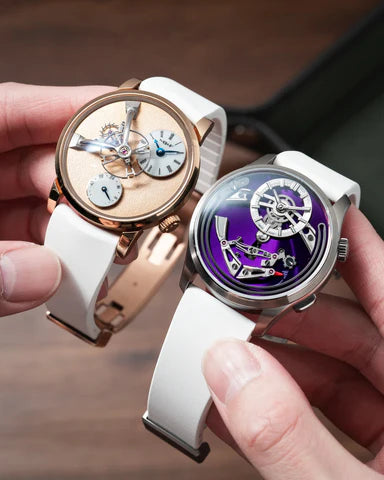

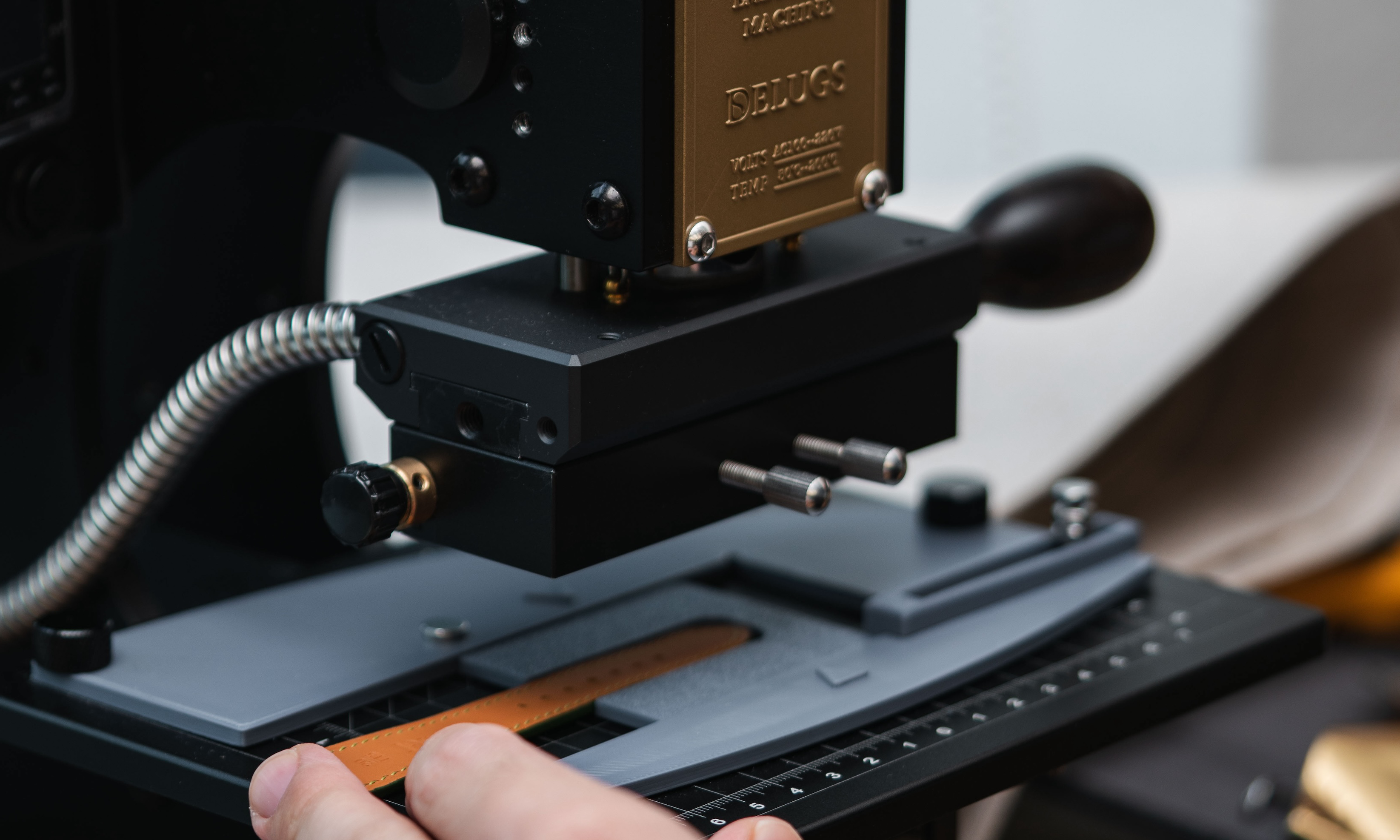


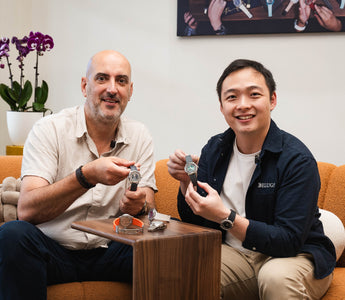
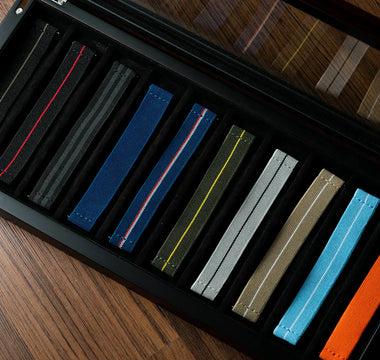
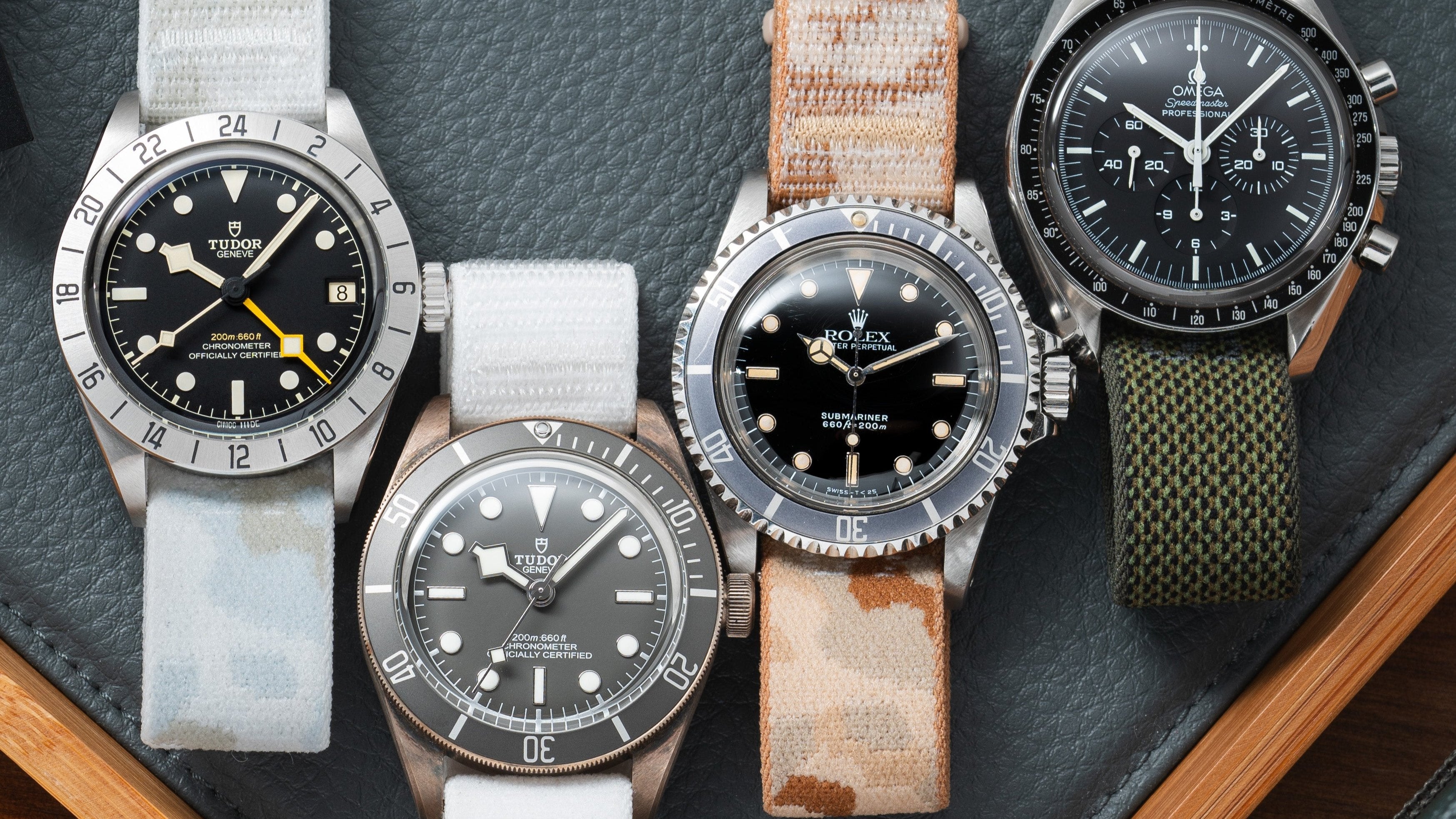
![Anthracite Hook Strap [kollokium x Delugs]](http://delugs.com/cdn/shop/files/20250919-A7405309_298x298_crop_center.jpg?v=1761299094)
![Anthracite Hook Strap [kollokium x Delugs]](http://delugs.com/cdn/shop/files/Kollokium_straps_Anthracite_1_298x298_crop_center.jpg?v=1761299094)
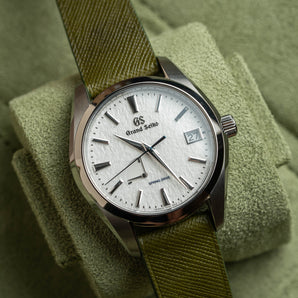
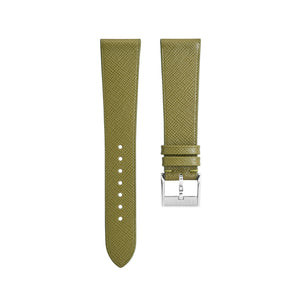
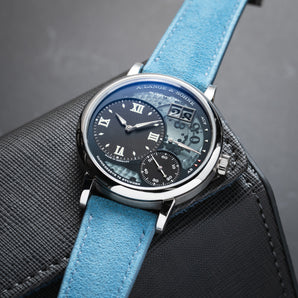
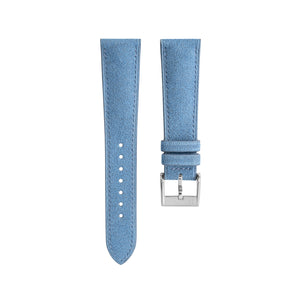
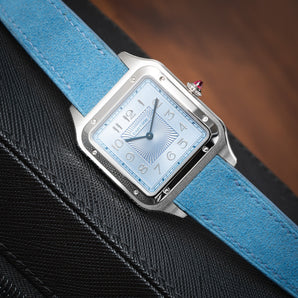
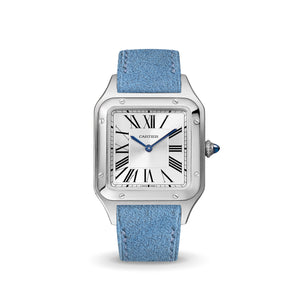
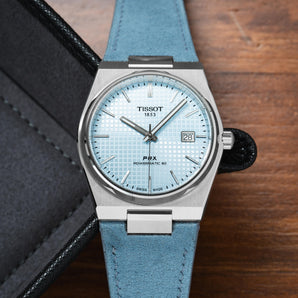
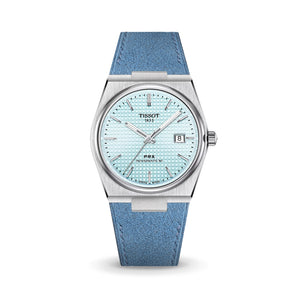
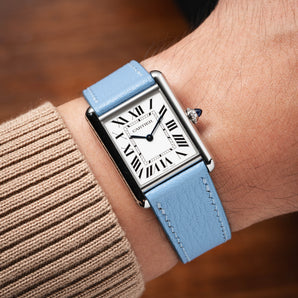
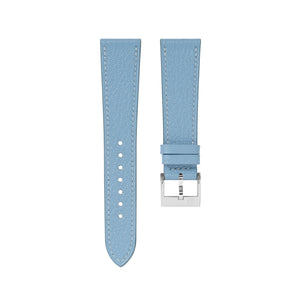
 Buy One, Get One 15% Off
Buy One, Get One 15% Off
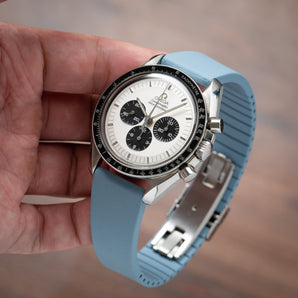

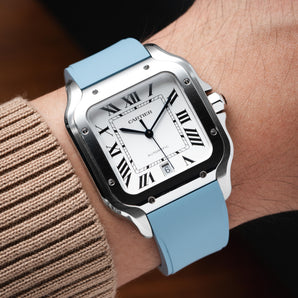
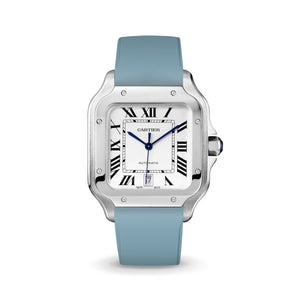
![Baby Blue CTS Rubber Strap for IWC Ingenieur [Prototype]](http://delugs.com/cdn/shop/files/20251001-DSC02482_1_298x298_crop_center.jpg?v=1759730616)
![Baby Blue CTS Rubber Strap for IWC Ingenieur [Prototype]](http://delugs.com/cdn/shop/files/IWC_Ingenieur_Rubber_CTS_Baby_Blue_298x298_crop_center.jpg?v=1759303635)
